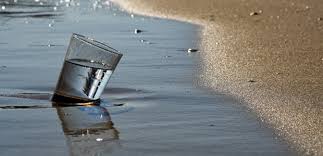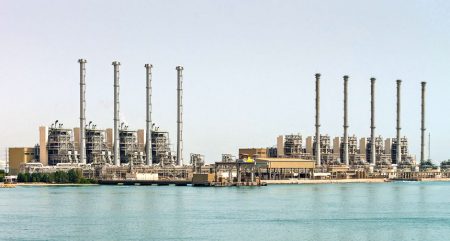
January 21, 2019 – A new United Nations study looks at freshwater demand and desalination technology. The team of researchers from the UN University Institute of Water, Environment, and Health at Wageningen University, The Netherlands and the Gwangju Institute of Science and Technology in South Korea, cataloged the almost 16,000 plants around the world producing 95 million cubic meters of freshwater daily. The byproduct of desalination is brine which amounts to 142 million cubic meters of the stuff each day or a liter-and-a-half for every liter of freshwater, a number that is 50% higher than previously estimated.
Almost half the world’s desalination plants can be found in the Middle East and North Africa, the largest producer being Saudi Arabia, followed by the United Arab Emirates (UAE), and Kuwait. East Asia and the Pacific region (notably Australia) are a distant second followed by the United States and China.
As for brine production, 55% of it is found in four Middle Eastern countries, Saudi Arabia, the UAE, Kuwait, and Qatar. Almost all of the desalination plants dump their brine back into the marine environment raising the salinity of local water and adding toxic elements like copper and chlorine. The brine, being heavier than seawater, settles down on the seabed where it is far away from waves and currents and, therefore, hard to disperse.
Studies to mine the brine to extract sodium, bromine, magnesium, calcium, potassium, lithium, and even uranium may prove one way of ensuring that a good percentage of brine never makes its way back to the ocean floor. Other research is using the brine for aquaculture where a high level of salinity is contributing to increasing tilapia fish farming biomass by 300%. Additionally, there is ongoing research in biosaline agriculture growing salt-tolerant food and forage crops both on land and in coastal waters. For example, spirulina, a form of seaweed, tolerates higher levels of salinity and can be consumed by both humans and livestock.
In a world increasingly facing freshwater scarcity, and a world ocean that covers 70% of the planet’s surface, it is no surprise that countries, where natural freshwater resources are scarce. have turned to desalination. The technology toget freshwater from seawater has been around for more than a century. Large-scale desalination for about half that time. Not all desalination technologies are created equal. The World Health Organization has noted a broad spectrum of contaminants largely based on from where the water is extracted. For example in The Middle East, desalinated water can contain inorganic and synthetic organic chemicals from close proximity to oil production and shipping terminals.
Nevertheless, the increasing demand for desalination technology has made these facilities absolutely necessary. With world population continuing to grow and the largest percentage of that growth in areas of freshwater scarcity, the demand cannot be ignored. But neither can we turn a blind eye to the environmental impact that the byproduct of desalination, the brine represents a growing environmental challenge.
Expect desalination facilities to double by mid-century as freshwater scarcity increases. But the energy intensity of desalination, particularly the use of fossil fuels in processing, and the carbon pollution produced, should have us considering more sustainable technologies for these future facilities than the ones in existence to-date. Let’s hope that governments take an environmentally responsible approach in both policy and planning to ensure that we don’t end up trading freshwater for more greenhouse gases entering our atmosphere and contributing to global warming.
















